Non-traditional media delivery of content has moved into the mainstream. And a panel of Scott Dyer, EVP of Corus Kids, Claude Galipeau, Senior VP Digital Media at Alliance Atlantis, Michael Hennessy, VP, Wireless, Broadband and Content Policy at TELUS and Brady Gilchrist, EVP Strategy and Head of BlueScience at Fuel Industries gathered to discuss its implications.
Scott: Webkinz can be thought of as programming. It’s providing a compelling content experience. It’s generating a huge amount of loyalty. And it appears to have some kind of revenue behind it. Is it a channel? Not now. A channel is an aggregator. Could it be a launching point for a channel? Yes, possibly.
Claude Galipeau: Three years ago, no one thought of social media as a likely source of assembling huge audiences. But it certainly is now. And for Canadian programmers, it’s a giant sucking sound going south. The social media sites are experiencing massive growth. And there’s no Canadian site that competes in this space. So, not only is Canada losing eyeballs, but we are losing opportunities to monetize this area.
Michael Hennessy: Telus is in the channels business. Today, half of the company’s revenue is from the wireless business. And Telus is trying to combine content and channels in new ways. We’re reinventing the business because we have to. We got into the television business because the cable guys got into the telecom business. We’re now a multi-platform company. What does this do? Well, if you look at our 5 million customers, we will have 10 to 15 million connection points as customers connect to more than one channel. The social media are bringing people together in communities of interest. And the television networks are picking up on the fact that they can tap into these communities by tapping into the different channels of delivery. At the end of the day, the traditional networks will end up owning this business.
Scott Dyer: From my point of view a channel is an aggregator of content of a particular kind. The narrowness of the niche of the aggregation is a function of the audience you trying to reach and the potential size of it. For us, television has been extremely successful. We’ve always believed that television is the best device to watch television. But if you deliver content that’s appropriate to the delivery channel – for example shorter on mobile – I don’t really care about the platform.
Claude Galipeau: The convention broadcasting channel as a brand has withered away. Channels that are developing brand now are focused on a niche or theme. We want to control the presentation to ensure the integrity of the programming. The issue for us is can we have channels that are monetizable?
Brady Gilchrist: Fuel Industries is a Canadian company that does most of its work in the US. Fuel does branded entertainment. Not a lot of this is being done in Canada. We do a lot of work with brands that are getting into brandcasting. Like Wrigleys. One thing we haven’t been able to invent more of is time. All of the channels are competing for the finite supply of consumer time. With the new generation of gaming we will see the introduction of “smarts” into set top boxes. Even with traditional television, people are using PVRs to use traditional channels as a content pipe. The brand loyalty is being shifted from the broadcaster to the content. This creates challenges for the traditional program distributors in figuring out how to diversify.
Claude Galipeau: The On Demand world is transforming the monarchy of the programmers. But if you look at the ratings, you can see that scheduling flow still works. But we’re certainly seeing the audience act as its own programmer with PVRs. And a lot of broadcasters see this as accretive to the linear broadcast schedule. And it’s particular helpful to serialized drama.
Scott Dyer: Looking at viewership, the research among kids suggests that television consumption is remaining stable, but that consumption of other media is increasing. The On Demand space is additive to the linear space. And even thought our On Demand programming may seem like we are passing control pack to the consumer, we still program it very carefully. It is another way of presenting the brand to the consumer. Linear and On Demand are two sides of the same coin. Looking at our TreeHouse On Demand as an example, it is hugely additive to the traditional lineary TreeHouse schedule.
Michael Hennessy: We really look at broadcasters as partners. Our business is On Demand. It is additive. Never forget that a lot of the drive for content in the On Demand space is the top content in the linear space. What distributors like Telus are becoming is aggregators. Aggregating channels and programming. Helping advertisers to target audiences and niches. However, a lot of this stuff that looks like television isn’t. It’s social activity. And as the time in this online social interaction increases, the opportunities for monetization grow as well. It’s a huge opportunity.
Claude Galipeau: Television is still a very strong medium. Mobile providers are functioning as brand gatekeepers. However, you don’t have this on broadband. So, broadband offers a great opportunities to reach through directly to the consumer.
Scott Dyer: When you look at an aggregation of content, those are the brands that are meaningful. The flattening of distribution gives us the opportunity to program narrower and narrower to interests. The narrower brands will inspire even greater loyalty.
Michael Hennessy: Our game is like the broadcaster did in the past: It’s to aggregate as much content as possible in as many ways to appeal to the broadest audience. The traditional broadcasters are not disappearing. We just want to deliver numbers to advertisers. We want to be huge, but we don’t want to be failures. And being a failure would come from thinking of content as a walled garden.
Brady Gilchrist: The market will dictate what it finds interesting.
 I believe that social media can be used to enhance our sense of connection with government and to increase the accountability of our elected representatives.
I believe that social media can be used to enhance our sense of connection with government and to increase the accountability of our elected representatives.
 Our craving for titillation is satisfied today by the coverage of a
Our craving for titillation is satisfied today by the coverage of a 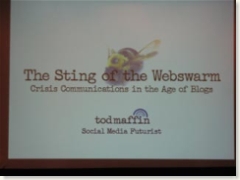
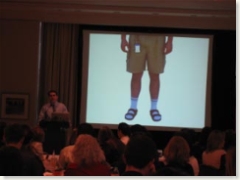

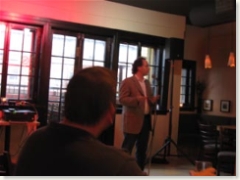
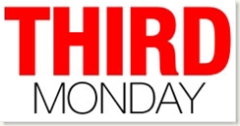
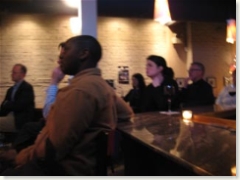
 Stuart MacDonald
Stuart MacDonald



 According to Angus Frame, Globeandmail.com expects to receive 100,000 comments in March from readers. Frame feels that this greatly enhances the online paper’s relationship with its readers and adds an additional dimension to its coverage of news.
According to Angus Frame, Globeandmail.com expects to receive 100,000 comments in March from readers. Frame feels that this greatly enhances the online paper’s relationship with its readers and adds an additional dimension to its coverage of news. Paul Sullivan talked about dealing with the “wing nuts.” Orato exercises some editorial control by pushing better stories and contributions to the front page. Other stories “that only their mother could love” languish in a back corner.
Paul Sullivan talked about dealing with the “wing nuts.” Orato exercises some editorial control by pushing better stories and contributions to the front page. Other stories “that only their mother could love” languish in a back corner. Michael Tippet indicated that NowPublic does not edit material. It counts on the community to police itself. He has found that members keep each other moderate through comments. NowPublic’s group of 30 to 40 volunteer editors attempt to demonstrate leadership in this area by flagging both good content and bad content.
Michael Tippet indicated that NowPublic does not edit material. It counts on the community to police itself. He has found that members keep each other moderate through comments. NowPublic’s group of 30 to 40 volunteer editors attempt to demonstrate leadership in this area by flagging both good content and bad content. Mark Evans argued that very few people are citizen journalists. Most people would be better called “citizen observers.” They write about events but they don’t practise journalism. Michael Tippet agreed with Evans, noting that NowPublic sees itself as a news gathering site, not a citizen journalism site.
Mark Evans argued that very few people are citizen journalists. Most people would be better called “citizen observers.” They write about events but they don’t practise journalism. Michael Tippet agreed with Evans, noting that NowPublic sees itself as a news gathering site, not a citizen journalism site. Maria Hale
Maria Hale Brian Seth Hurst
Brian Seth Hurst Blogger and author
Blogger and author 
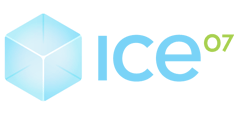 I’ll be attending the
I’ll be attending the